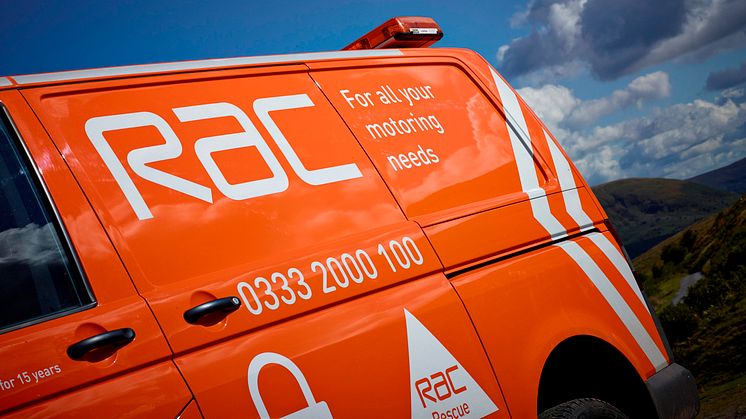
Press release -
Drivers want rest of UK to follow Scotland's lead by lowering the drink-drive limit
Motorists feel different limits are a bad idea that will cause confusion
With Scotland introducing a new lower drink-drive limit on Friday 5 December, more than a third (38%) of UK motorists living outside Scotland believe the alcohol limit for driving should be reduced to the same level throughout the rest of the UK.
In fact, a quarter (23%) of UK drivers would actually prefer to go a step further and have a total ban on consuming any alcohol before driving.
The findings of an RAC study of 2,607 motorists – 10% from Scotland – found that only a fifth of drivers (18%) from Scotland and the rest of the UK were against the Scottish drink-drive limit reduction and only 24% of motorists outside Scotland believe the current UK drink-drive limit should be left at the level of 80mgs of alcohol per 100ml of blood.
There was strong feeling from 81% of those questioned that it is a bad idea to have different drink-drive limits in the separate nations of the UK, with nine in 10 (92%) thinking it will cause confusion for people who spend time north of the border from other parts of the UK.
Scotland reduces its limit from the present UK level of 80mgs of alcohol per 100ml of blood to 50mgs on 5 December – a move which has the support of more than three quarters of Scottish motorists surveyed with 79% saying they are in favour of the drink-drive limit being reduced. This brings Scotland in line with the majority of European countries which operate a similar limit.
What’s more, many Scots feel the Scottish Government should have gone further with more than a quarter (26%) from Scotland saying they would like to see the limit lowered below the 50mg mark.
Awareness of the change to a lower legal alcohol limit for driving in Scotland is very high at 94%, and even south of the border 58% of drivers say they are aware of the planned reduction. The research also found that 57% of Scots correctly knew the new limit will be introduced in time for the Christmas anti-drink-drive campaign.
RAC head of external affairs Pete Williams said: “Drink-driving is probably the most emotive road safety issue of all. Scotland’s decision to reduce its legal limit for driving to 50mg of alcohol in 100ml of blood seems to have struck a chord with motorists.
“What is absolutely clear is that drivers would like to see the same limit enforced wherever they are in the UK and that limit appears to be the new lower Scottish one rather than the current UK limit of 80mg of alcohol in 100ml of blood.
“The potential for causing confusion is top of people’s minds, but there is a very clear underlying feeling that the current UK limit is too high and that the rest of the UK should be following Scotland’s lead.
“Since 2002 when there were 20,100 drink-drive casualties in Great Britain, 550 of which were fatalities, we have seen a dramatic reduction to 9,930 casualties and 230 deaths in 2012**. However, every drink-drive casualty is one too many which is, no doubt, why people feel so strongly about reducing the limit.”
The RAC Report on Motoring 2014 found that 6% of drivers admit to knowing or suspecting they have driven in the last 12 months while over the limit shortly after consuming alcohol. In addition, 11% of motorists believe or suspect they have done so the morning after a night out. However, younger drivers are more likely to drink and drive with 14% admitting to knowing or suspecting they have driven under the influence the morning after.
Fortunately, the percentage of drivers admitting to drink-drive behaviour has decreased steadily. It was a different story back in the 2006 RAC Repot on Motoring when nearly one in five (19%) motorists claimed they occasionally got behind the wheel after exceeding the legal limit and some 32% of drivers of company and luxury cars admitted to doing so on ‘rare occasions’.
Ends
Notes to Editors:
* Research carried out via the RAC Opinion Panel with 2,607, 262 from Scotland, from 5-12 November 2014.
** Department for Transport RAS51001: Estimated number of reported – drink-drive accidents and casualties in Great Britain: 1979 – 2012
www.gov.uk/government/publications/reported-road-casualties-great-britain-annual-report-2013
Topics
Notes to Editors
About the RAC
First formed in 1897, the RAC has been looking after the needs of its members and championing the interests of drivers for more than 120 years.
Today it has more than eight million members and is one of the UK’s most progressive motoring organisations, providing services for both private and business motorists. Whether it's roadside assistance, insurance, buying a used car, vehicle inspections and checks, legal services or up-to-the-minute traffic and travel information – the RAC offers a solution for all motoring needs. The RAC is committed to making motoring easier, safer, more affordable and more enjoyable for drivers and road users.
The RAC is the motorist’s champion and campaigns to support the interests of its members and UK drivers at a national level. This includes voicing concerns about the increasing cost of motoring, particularly the price of fuel and the high level of tax levied on it, advancing levels of road safety, and supporting the needs of all drivers, from young to old.
The RAC’s annual Report on Motoring – first published in 1989 – is one of a kind and provides a clear insight into the concerns and issues facing today’s motorists.
For the very latest news on UK fuel prices, check RAC Fuel Watch. It provides a comprehensive guide to the latest UK unleaded petrol and diesel prices – both at the wholesale level and at the pump - and tracks these prices daily to help drivers check if the price they pay to fill up is a fair one.

